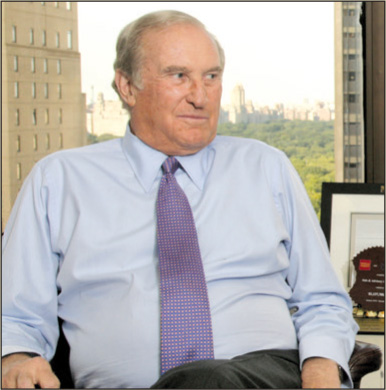Trending
This month in real estate history
This month in real estate history

1986: Nomura pays $50M for half of Eastdil Realty
The world’s largest financial brokerage, Japanese bank Nomura Securities, paid $50 million to buy half of Midtown-based real estate investment firm Eastdil Realty, 28 years ago this month.
Nomura purchased the stake in Eastdil to gain access to the booming American real estate market and to catch up with other large investment banks, including Goldman Sachs and Salomon Brothers, that already had real estate divisions.
It was Nomura’s second American real estate company purchase that year: Months earlier it acquired mortgage brokerage Babcock & Brown Real Estate.
Eastdil, founded by Benjamin Lambert in 1967, was credited with bringing a more sophisticated marketing process to major property sales. Lambert said the Nomura deal would allow the firm, which did about $3 billion a year in transactions, to access capital while staying independent.
Ultimately the purchase did not hold, and Eastdil bought back its interest in 1994. Five years later, it sold itself to the San Francisco-based bank Wells Fargo. In 2006, Wells Fargo purchased Secured Capital, and the two firms were merged and renamed Eastdil Secured, which operates as a stand-alone division.
1961: Transformative zoning law takes effect
The first comprehensive overhaul of the city’s zoning laws since they were established in 1916 took effect 53 years ago this month.
The 1961 resolution established the “tower-in-the-park” skyscraper model, providing incentives that let developers erect buildings that were larger than in-place regulations in exchange for public plazas, and it reduced zoning in residential areas, especially the outer boroughs.
The city adopted the regulations to update the height, setback and bulk regulations formulated at the turn of the century to control skyscraper development and to establish residential areas free of incompatible uses.
The new rules were meant to clarify uses, and to manage the city’s explosive post-war growth in both residential and commercial development.
While the resolution had broad support, it was not universal. The Queens Chamber of Commerce criticized the new document for “specific cases of improper zoning,” the New York Times reported as the law took effect.
Today, some features of the 1961 law are seen as outdated, such as the tower-in-the-park structure, which isolates the building from pedestrians.
1924: Shriners dedicate temple that became City Center
The fraternal society the Ancient Arabic Order of Nobles of the Ancient Shrine, better known as the Shriners, dedicated the hulking $2.5 million Moorish-inspired auditorium Mecca Temple in Midtown 90 years ago this month.
The building includes what is considered the largest piece of steel ever used in a New York City building, according to a report from the Landmarks Preservation Commission, which designated the building a landmark in 1983. The beam was more than 92 feet long, 13 feet wide, and weighed in at 65 tons.
The Shriners, founded in Manhattan in the 19th century as an entertainment and charity-oriented offshoot of the Order of Freemasons, built the 12-story structure at 131 West 55th Street, between Sixth and Seventh avenues, to accommodate its growing membership. The society purchased the land in 1922 from Yale University for $400,000.
The building was funded with bonds and debt, which were to be supported in part by renting out the venue for other uses. At the time, it was thought the theaters of Broadway might continue to migrate as far north as 55th Street, and those crowds could fill the nearly 3,000-seat theater.
But the Great Depression hit the bottom line hard, and in 1937 the lender foreclosed. After another business venture failed, the city took over the property because of delinquent taxes. The 12-story structure was reborn in 1943 through the backing of Mayor Fiorello La Guardia as a public performing arts venue called the City Center of Music and Drama, which continues to operate today as the New York City Center.




